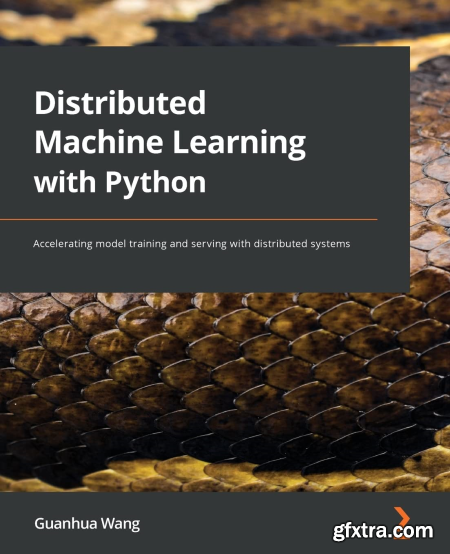
English | 2022 | ISBN: 1801815690 | 284 pages | True PDF EPUB | 47 MB
Build and deploy an efficient data processing pipeline for machine learning model training in an elastic, in-parallel model training or multi-tenant cluster and cloud Key Features Accelerate model training and interference with order-of-magnitude reduction Learn state-of-the-art parallel schemes for both model training and serving A detailed study of bottlenecks at distributed model training and serving stages Book Description Reducing cost in machine learning leads to a shorter waiting for model training and a faster model updating cycle. Distributed machine learning enables machine learning practitioners to shorten model training and inference by orders of magnitude. With the help of this practical guide, you'll be able to put your Python development knowledge to work to get up and running with the implementation of distributed machine learning, including multi-node machine learning systems, in no . You'll b by exploring how distributed systems work in the machine learning area and how distributed machine learning is applied to state-of-the-art deep learning models. As you advance, you'll see how to use distributed systems to enhance machine learning model training and serving speed. You'll also get to grips with applying data parallel and model parallel approaches before optimizing the in-parallel model training and serving pipeline in local clusters or cloud environments. By the end of this book, you'll have gained the knowledge and skills needed to build and deploy an efficient data processing pipeline for machine learning model training and inference in a distributed manner. What you will learn Deploy distributed model training and serving pipelines Get to grips with the advanced features in TensorFlow and PyTorch Mitigate system bottlenecks during in-parallel model training and serving Discover the latest techniques on top of classical parallelism paradigm Explore advanced features in Megatron-LM and Mesh-TensorFlow Use state-of-the-art hardware such as NVLink, NVSwitch, and GPUs Who this book is for This book is for data scientists, machine learning eeers, and ML practitioners in both academia and industry. A fundamental understanding of machine learning concepts and working knowledge of Python programming is assumed. Prior experience implementing ML/DL models with TensorFlow or PyTorch will be beneficial. You'll find this book useful if you are interested in using distributed systems to boost machine learning model training and serving speed. Table of Contents Splitting Input Data Parameter Server and All-Reduce Building a Data Parallel Training and Serving Pipeline Bottlenecks and Solutions Splitting the Model Pipeline Input and Layer Split Implementing Model Parallel Training and Serving Workflows Achieving Higher Throughput and Lower Latency A Hybrid of Data and Model Parallelism Federated Learning and Edge Devices Elastic Model Training and Serving Advanced Techniques for Further Speed-Ups
Top Rated News
- Sean Archer
- AwTeaches
- Learn Squared
- PhotoWhoa
- Houdini-Course
- Photigy
- August Dering Photography
- StudioGuti
- Creatoom
- Creature Art Teacher
- Creator Foundry
- Patreon Collections
- Udemy - Turkce
- BigFilms
- Jerry Ghionis
- ACIDBITE
- BigMediumSmall
- Boom Library
- Globe Plants
- Unleashed Education
- The School of Photography
- Visual Education
- LeartesStudios - Cosmos
- All Veer Fancy Collection!
- All OJO Images
- All ZZVe Vectors




